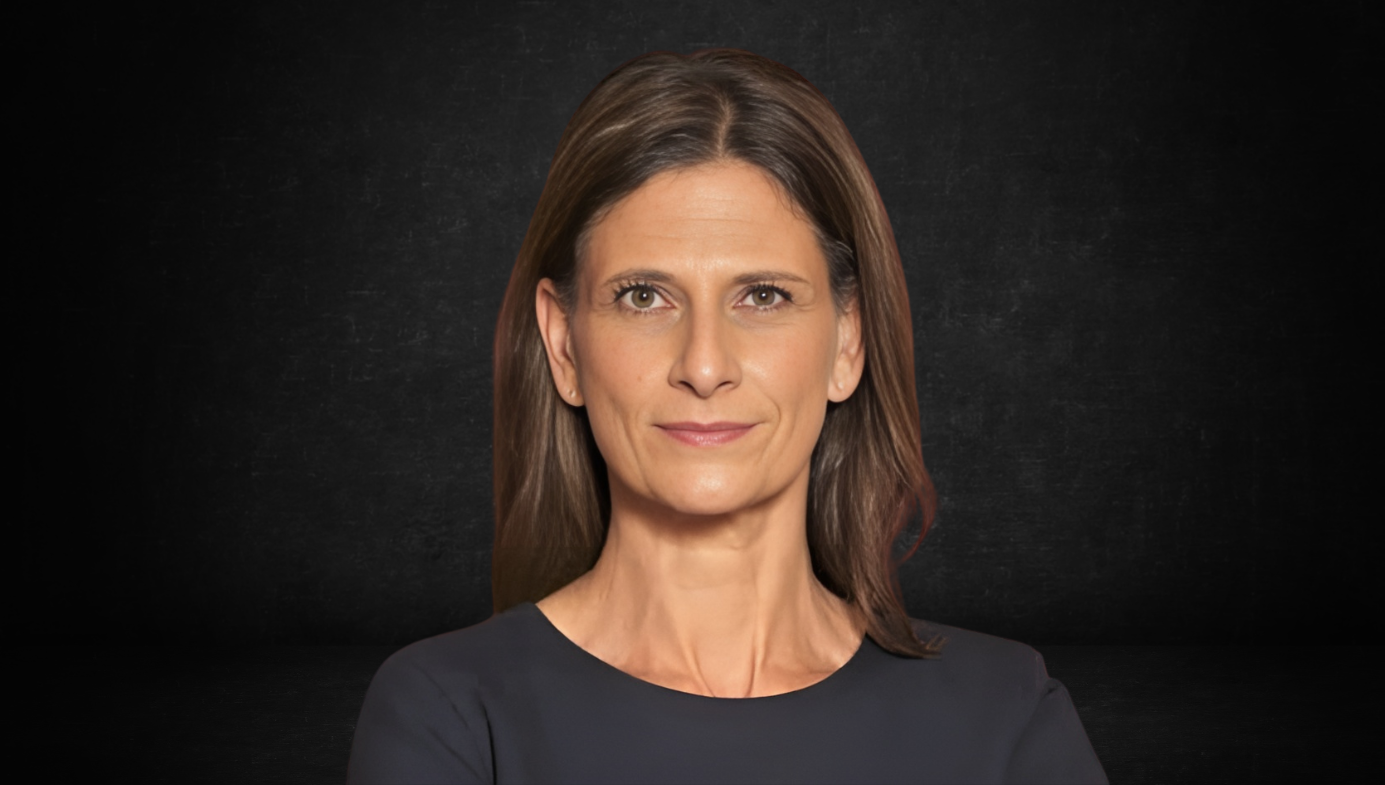Spinning the Tavistock Story
Activists are twisting the closure of Tavistock as a win for gender ideology.

The closure of the UK’s Tavistock Centre, the world’s largest youth gender clinic, is, in truth, not a reversal for clinics elsewhere. The Tavistock’s long waiting times were shameful, hence the plan to replace the standalone London-based clinic with a network of regional clinics. In some ways, the Tavistock was old-fashioned, and the new-look expanded system will not only shorten waiting times but offer young Brits a cutting-edge model of “gender-affirming” care already successful in other countries, such as Australia.
So runs the argument by advocates of the “affirmative” medicalised worldview (in which clinicians follow the lead of a young person’s self-declared transgender identity and deploy hormonal and surgical treatments to make their body a facsimile of the opposite sex).
Pink News, the digital tabloid of Britain’s gender faithful, reported last month that “the doctor leading an NHS [National Health Service] review into trans youth healthcare [paediatrician Dr Hilary Cass] has shut down those misrepresenting the closure of the Tavistock gender clinic as a win for the anti-trans movement … Cass has underlined that the closure is designed to improve access to healthcare, not shut it down, and complimented the work of staff at the Tavistock centre.”
The American psychiatrist Dr Jack Turban, a darling of progressive media, took issue with downbeat coverage of the Tavistock’s demise, tweeting that “Reporters need to *get it together*—Yes, the UK’s big pediatric gender clinic is closing [but] It’s *not* because the country is shutting down gender-affirming care [In fact,] They’re moving care to more smaller clinics to shorten wait times for comprehensive care.”
In the Melbourne newspaper, the Age, the president of Australia’s gender-affirming health lobby, Dr Fiona Bisshop, conceded it might, at first blush, appear that the fate of the Tavistock amounted to “a condemnation of children’s gender clinics in general.” But no, not at all, she explained, for Dr Cass’s reforms entailed a shift to a more modern decentralised network model of care similar to that already operating in Australia. Shutting down the Tavistock, she argued, “just vindicates that the gender clinics here [anchored in Australia’s children’s hospitals] are on the right track.” Dr Bisshop finished her article with the confident flourish of a true believer: “There is no doubt—gender affirmation is not only evidence-based, it is vital, life-changing and life-saving.”
Can the fall of the Tavistock truly be transitioned into a victory for youth gender medicine?
Evidence, what evidence?
Let’s begin with the missing body of evidence. Dr Cass’s plans for the future are easily misconstrued without revisiting the groundwork for her independent inquiry. She drew on two sobering reviews of the evidence—or lack of evidence, rather—for gender clinic treatments of minors. In March 2021, the UK’s National Institute for Health and Care Excellence (NICE) reported the outcome of its systematic analysis of the medical literature on puberty blocker drugs used to interrupt unwanted sexual development at ages as young as nine years. This systematic review found 525 references, but after screening for quality, only nine studies were good enough to be included in NICE’s systematic review. Even with these studies, the reported outcomes were rated as of “very low certainty.” As for hormone drugs to masculinise or feminise the adolescent body, NICE identified 1,997 studies, but only 10 qualified for the review. Again, even the results of this select group of less weak studies were rated as of “very low certainty.” It’s difficult to say with any confidence what these treatments do, and whether they bring benefit or harm to minors.
The same regimen of puberty blockers followed by lifelong hormones is used by gender-affirming clinics around the world. True, there are some differences in organisational structure and the timing of medical treatment, but the evidence base is the same. So, too, is the relatively new patient profile of disproportionately female teenagers with atypical late-onset of gender dysphoria—a distressful disconnect between the sexed body and an inner feeling of “gender identity”—and a host of other potentially complicating issues.
Given these common features, it’s not surprising that expert reviews in jurisdictions as different as Finland, Sweden, the UK, and the US state of Florida have all failed to find sufficient evidence to justify medicalised gender change as a routine treatment for today’s troubled minors. In June 2020, Finland’s public sector Council for Choices in Health Care was quite blunt: “gender reassignment of minors is an experimental practice.”
It’s not that gender-affirming activists cite no research at all for their medical interventions. Their go-to studies typically generate breathless headlines in the media proclaiming “life-saving” interventions but cannot survive the objective method of systematic review controlling for bias and discarding flawed research with shortcomings in design. So, the gender-affirming tactic has been to ignore this trial by scientific ordeal, especially when it’s carried out in progressive societies such as Sweden and Finland. Elsewhere, any scepticism about youth gender medicine is characterised as a transphobic attack on “trans kids” by the right-wing.
Even gender-affirming scholars can produce inconvenient results with an objective approach. In 2018, the journal Pediatrics published what was said to be the first systematic review of the evidence for hormonal treatment of adolescents with gender dysphoria. The outcome? Medium to high risk of bias in all the studies reviewed. Small sample sizes; little use of control groups. Large numbers of ex-patients whose outcomes were unknown. Failure to study key issues such as treatment regret. In summary, the review’s authors said: “Low-quality evidence suggests that hormonal treatments for transgender adolescents can achieve their intended physical effects, but evidence regarding their psychosocial and cognitive impact [is] generally lacking.”
Among the authors was Dr Ken Pang, head of research for Australia’s largest youth gender clinic at the Royal Children’s Hospital (RCH) in Melbourne. That hospital’s confidently affirmative treatment guideline, praised by the Lancet as the first such guideline specific to children and adolescents, does not include the discouraging Pediatrics paper among its 70 references. RCH would not say why when asked.
An uncontrolled experiment
The preferred strategy of affirmative advocates has been to invoke a “clinical consensus” in their favour, based on upbeat treatment guidelines and the “eminence-based medicine” of endorsements from small, activist-captured committees of august medical societies. This formula has been quite effective in countries—as various as the US, Spain, and New Zealand—where the identity politics of trans rights usually trumps inquisitive media coverage.
But, thanks to bolshie British activism, investigative reporting, and enough politicians willing to listen, the Tavistock has not escaped scrutiny, and now the NHS is having to face up to the reality that its flagship gender clinic has been allowing minors to take part in an undeclared medical experiment. And yet here we are, being told there are no implications for clinics elsewhere; that the same medical treatment with the same impoverished evidence base can carry on; and that minors outside clinical trials can give fully informed consent to experimental treatment misrepresented as the gold standard.
In April, the British Medical Journal published an opinion piece by Australian champions of the gender-affirming approach who put the case for business as usual. They argued that Dr Cass was wrong to say in her February interim report that the evidence was so patchy and poor that she was unable to give a confident verdict on the safety of puberty blockers and opposite-sex hormones for minors. Notwithstanding multiple systematic reviews to the contrary, the Australians claimed that existing evidence and agreement among (fellow affirmative) clinicians are enough to keep prescribing these drugs as routine treatment.
Four months later, those systematic reviews and the Cass interim report culminated in the announcement that the Tavistock would be shut down. This was rightly reported as big international news, but much of its significance and relevance is being obscured by spin.
Blockers and the brain
The powerful adolescent appeal of puberty blockers, a novel treatment still being promoted as safe and reversible, has been central to the rapid global expansion of gender clinics. These drugs, not licensed to treat gender dysphoria, loom large in Dr Cass’s concerns. In her July letter to the NHS, she highlights the extraordinary fact that blockers are being prescribed without clarity about their true rationale. One worrisome view, suggested by the limited data available, is that puberty blockers set off a cascade of increasing medicalisation whereby young people become permanent patients, with no long-term data on the outcomes they might expect. The competing view, retailed to many eager children and their anxious parents, is that hormone suppression is a no-regrets pause in the distressful development of sex characteristics, allowing the child time to explore their gender identity and decide whether or not to graduate to a life on hormones.
But this decision-making—and cognitive development, more generally—may be compromised by the puberty blocker drugs themselves. As Dr Cass explains, the natural sex hormones being suppressed may be necessary to “trigger the opening of a critical period for experience-dependent rewiring of neural circuits underlying executive function" (i.e., maturation of the part of the brain concerned with planning, decision-making, and judgement). Going further, Cass writes:
If this is the case, brain maturation may be temporarily or permanently disrupted by puberty blockers, which could have significant impact on the ability to make complex risk-laden decisions, as well as possible longer-term neuropsychological consequences. To date, there has been very limited research on the short-, medium-, or longer-term impact of puberty blockers on neurocognitive development.
Hence Dr Cass’s advice that the NHS swiftly set up “a formal research programme [on hormonal treatment of young people] with adequate follow-up into adulthood, with a more immediate focus on the questions regarding puberty blockers.” In other words, this is experimental treatment. Whether or not such research can be both ethical and robust is yet to be debated. In any case, doctors must be aware by now that they run serious legal and moral risks if they continue to approve hormonal or surgical treatment for minors as routine interventions.
Explore or affirm?
As for the claim that the post-Tavistock plans in the UK represent an endorsement by expansion of the affirmative model, it’s simply not credible. Amid polarisation and polemic, Dr Cass has been tactful and pragmatic, so you won’t find an outright rejection of the affirmative model in her commentary. But there is plenty on the record to show she is conscious of the risks associated with dogmatic affirmation.
Take, for starters, the recent enthusiasm for social transition before puberty, whereby a child’s opposite-sex identity is affirmed by parents and teachers as the correct and compassionate thing to do. In her interim report, Dr Cass dispels the illusion that early social transition, presided over by amateurs, has less consequence than a formal intervention by a clinician. On the contrary, she says, “it is important to view it as an active intervention because it may have significant effects on the child or young person in terms of their psychological functioning.” Early social transition, then, is “not a neutral act, and better information is needed about [its] outcomes.”
One possibility is that it loads the therapeutic dice. Dr Cass observes that social transition—while a child waits for an appointment with a gender clinician—is one of the factors influencing the mostly “affirmative, non-exploratory” approach of the Tavistock from the point of entry to the clinic. “Non-exploratory” is not a compliment in the clinical world.
Exploration seems vital if it’s possible that, when a child presents with gender distress and seeks transition, the true cause and the right treatment lie elsewhere. The Tavistock is not the only clinic with an over-representation of patients with autism, inchoate same-sex attraction, psychiatric disorders, and family-related trauma. Exploratory clinicians would argue that wide-ranging and open-minded talk therapy might alleviate the distress of young people and lead them to freely accept their one and only body. A resolution like this, and avoidance of lifelong medicalisation, are outcomes that most people would regard as successful.
But the militantly affirmative would attribute this result to an unethical intention to “convert” the child so that its gender identity conforms to birth sex. In many jurisdictions across the woke world, clinicians and parents deemed to practise “conversion therapy” risk prosecution under legislation that conflates the fixed sexual orientation of adults with a young person’s identity formation open to the influence of a spectrum of sex roles, social media, and peer group example.
The Cass interim report draws a contrast between the affirmative approach and a more cautious exploratory approach, and it is clear enough which is considered superior. A key recommendation, under the heading “Clinical Approach,” is that “clinicians should remain open and explore the patient’s experience and the range of support and treatment options that may best address their needs, including any specific needs of neurodiverse children and young people.”
It’s spin to suggest Dr Cass has come to rescue the affirmative model from the ruins of the Tavistock. The gender clinic lobby in Australia—run by the same Dr Bisshop who says nothing needs to change Down Under—expressed concern about “statements in the [Cass] review questioning an affirmative approach to gender affirming care.” And this same lobby says it does “not support ‘exploratory therapy’ which is often used as a euphemism for conversion therapy.”
The need for shorter waiting times at clinics is common ground. Dr Cass is understandably troubled by the two-and-a-half-years-plus waiting time to be seen at the UK’s only specialist gender clinic—but not because it delays affirmative medicalisation for “trans kids” who know they need puberty blockers.
Rather, Dr Cass is concerned about these troubled minors being denied the holistic and open-minded care that is expected in any other health domain. Family doctors and specialists told the inquiry they felt pressure to follow “an unquestioning approach” which “was at odds with a more open and holistic evaluation of the factors underpinning the young person’s presentation, and consideration of the full range of possible support and treatment options.” The fear that a standard clinical approach will be deemed unethical conversion therapy no doubt also explains the reluctance of many doctors to do anything other than affirming and referring these patients to the gender clinic. In practice, this means distressed children and adolescents languishing on a waiting list while a host of potential underlying causes of gender distress and accompanying problems go uninvestigated.
Dr Cass has said it is “not helpful to exceptionalise gender identity issues.” The argument against the affirmative model is precisely that its gender lens detects nothing but gender. Hence the Cass report’s warning against “diagnostic overshadowing”: “many of the children and young people presenting [at clinics] have complex needs, but once they are identified as having gender-related distress, other important healthcare issues that would normally be managed by local services can sometimes be subsumed by the label of gender dysphoria.”
Your pathology, my medicine
Dr Cass has also defended traditional medical safeguards against the anti-depathologisation rhetoric of affirmationists who confuse the rights-based claims of a trans identity with the treatable condition of gender dysphoria. In this mode, affirmative activists argue that talk of differential diagnosis or comorbidity turns trans into a pathology. Dr Cass’s rejoinder is that the request for medical treatment triggers fundamental duties on the part of the doctor, who has “a professional obligation to go through a process of ensuring that [treatment] is appropriate for the health needs of the individual, which means making a positive diagnosis (what the condition is) and a differential diagnosis (what the condition isn’t). This applies in all areas of medicine.”
It’s incoherent when the affirmative position is to reject pathologisation, while insisting that young people should be medicalised—potentially resulting in their sterilisation and sexual dysfunction—if, according to some unclear personal criterion, they happen to request drugs and surgery to become who they always were. For example, the “informed consent” approach (a misnomer for the fast-tracking of “affirmative” hormonal interventions) seems to promote a form of identity medicine available on demand as a human right.
In any event, it’s clear that the Cass review is no charter for a regional rollout of affirmation-only gender clinics. Instead, the idea is to more safely anchor clinics in mainstream health with a timely and tailored offering of interventions, so that the whole person, not just a disembodied gender identity, is given proper clinical attention. Is this what care looks like in the children’s hospital gender clinics of America or Australia?
When criticised, these clinics typically say they take a considered, multidisciplinary approach which does not necessarily lead to medical intervention. However, not all parents or health professionals who have seen the process up close come away reassured. There are similar accounts internationally of immediate affirmation of a trans identity, a rush to medicalise, and a failure to give weight to serious non-gender problems that might better explain the child’s distress. Parents hesitating about going along with hormonal treatment have been told they face a choice between a live trans son or a dead daughter. These are anecdotes, of course, but the failure of gender clinics to publish clear and detailed data does not inspire confidence.
Those who fear that ideology is compromising medical safeguards include some doctors on the staff of the same children’s hospitals that are home to gender clinics. As for medical specialists and family doctors, it seems their professional bodies in various countries failed to do due diligence before recommending the affirmative way. Some members of medical societies are agitating for rigorous reviews of pro-affirmative policy while advising patients to avoid the local gender clinic.
Cass would be aware of the risk that the affirmative approach will capture the new regional network of clinics, which will inevitably involve clinicians from the Tavistock. The staff of the Tavistock were divided in their approach, and many of the more cautious had left. The UK, and any other country hoping to bring gender back within a mainstream health system, faces formidable challenges, beginning with workforce planning and training. Many institutions bend the knee to identity politics and the reckless suicide narrative of gender clinicians.
Dr Cass’s advice includes elements calculated to fashion a therapeutic culture resistant to affirmative groupthink. There will be independent oversight of data collection at the new regional clinics, and the Cass review itself will produce protocols for assessment and treatment as part of its ambitious programme of research. Collaboration at the national level will also be charged with the task of filling the many gaps in the evidence base and applying new insights to the regional clinics.
Will research gradually displace ideology from the field of gender? Too early to say, but gender-affirming research has certainly set a low bar for quality. Kids with cancer join randomised control trials of experimental treatments, knowing they may get a placebo. But this would be unethical with gender dysphoria, according to gender clinics researchers who set up a false binary between their own affirmative treatments and “doing nothing” to relieve distress. Why not use a comparison group offered exploratory talk therapy? That’s likely to be denounced as hateful conversion therapy. The affirmative mindset is curious. It admits the need for research but resists the possibility that anyone in a study could be denied affirmative treatment. It’s as if research is redundant because clinicians already know their affirmative approach is “life-saving”—and they’ve got the headlines to prove it.











